Renovation Project Planning Part 2: Creating a Statement of Purpose and Goals
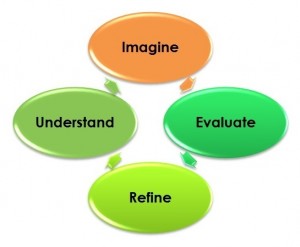 There are lots of great reasons to renovate, but your ultimate success will be defined by how well you really understand what you are truly trying to achieve. You may start out thinking you want to change something for one reason, but later learn that the real problem is something else. Creating a statement of purpose is the first step in ensuring you have the correct definition of the problem(s).
There are lots of great reasons to renovate, but your ultimate success will be defined by how well you really understand what you are truly trying to achieve. You may start out thinking you want to change something for one reason, but later learn that the real problem is something else. Creating a statement of purpose is the first step in ensuring you have the correct definition of the problem(s).
For example, you may say in your Statement of Purpose:
“Fix the layout of the bathroom so that it is easier for multiple people to get ready in the morning.”
And, through brainstorming in your Statement of Goals:
“What I really want is to be able to take a soothing bath by myself”
You may arrive at a more creative solution: possibly an additional bathroom instead of redesigning the first one.
As Francis D.K. Ching and Corky Binggeli put it in Interior Design Illustrated (Second Edition): “The design problem is first defined. The ability to define and understand the nature of the design problem adequately is an essential part of the solution. This definition should specify how the design solution will perform and what goals and objectives will be met.”
In creating a Statement of Purpose and Goals, an additional challenge is to fully identify all of the things that you really need, rather than just the wants. I could look at any number of books for inspiration, and find thousands of gorgeous images of great approaches, but you can’t simply transplant someone else’s success and expect it to work. Why not? Because that beautiful design is in someone else’s house, and that house is different – maybe it has taller ceilings, or more natural light, or a better view out the window. There are different people who live there as well, and their lives and routines and even their bodies are different (they’re probably taller, for one thing). There may be more of them using the space for different things.
In the end, design is not a luxury for the wealthy; it is a necessary part of everyone’s daily life. Design is not just about visual appeal, at its core it’s about how things work and how we interact with them.
In Part 1, I said that I would be using a common renovation project as a case study to concretize some of these ideas. Here’s the big reveal: we’ll be using my upcoming bathroom renovations as a planning case study.
A Statement of Purpose and Goals doesn’t just record the reasons for the renovation, it’s the first step in helping you engage in a deeper thinking process. To start with, your reasons can be broken down into functional and aesthetic problems you want to solve.
My preliminary statement of purpose is: I want a bathroom that is easier to clean and is easier to do grooming tasks in. I also want to update the look.
When I sit down and think, here are the specific problems I want to solve:
Functional
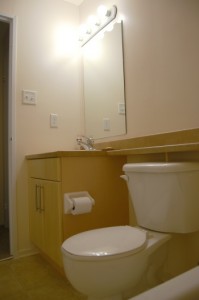 There is nowhere to store my grooming supplies when not in use. There’s a vanity, but it’s not set up for small bottles or tools.
There is nowhere to store my grooming supplies when not in use. There’s a vanity, but it’s not set up for small bottles or tools.- There is not enough counter space for me to work with grooming supplies.
- The light is very bad throughout the bathroom:
- It’s hard to see in the shower when shaving.
- It’s hard to see at the sink station when applying makeup or doing hair.
- I can’t see the back of my head while I’m working on it.
- The toilet uses a lot of water, and I’d like to get a dual-flush model.
- The outside of the toilet has a lot of contours that are difficult to keep clean.
- I’d like to replace the shower curtain with some sort of solution that is easier to clean.
- The sink area is very difficult to clean up after shaving.
- The chrome finish on the sink drain is noticeably wearing away.
Aesthetic
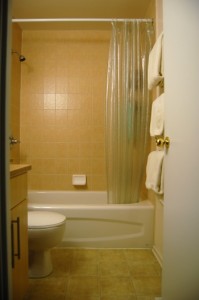 The bathroom overall is very small – I would like to give it a more open or airy feel if possible.
The bathroom overall is very small – I would like to give it a more open or airy feel if possible.- The visible seam on the folding area of the counter looks odd and is not easy to clean.
- There is no natural light.
- The decor does not match my preferred choices. I like to surround myself with natural materials, for a relaxing mood, but punctuate with some high-tech elements.
- Whoever installed the light over the mirror made it very lopsided!
When I consider the above, my preliminary Statement of Goals is: a bathroom that is both easier to use and looks beautiful.
Next week, we’ll be doing a detailed Needs Analysis, and see if that changes anything on the list.
by Jennifer Priest
Follow me on Google +

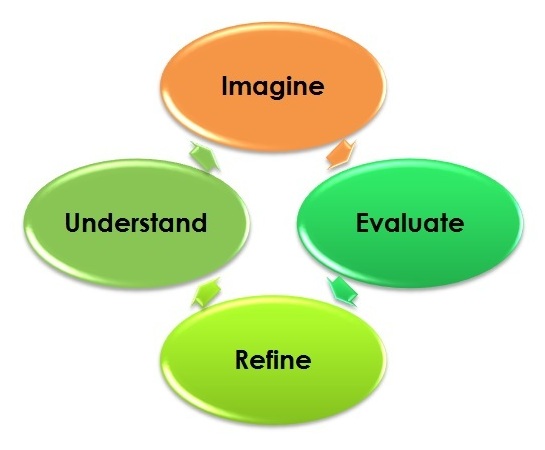
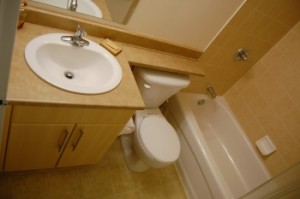
Pingback: Renovation Project Planning Part 3: Needs Analysis (Case Study: Bathroom Renovation) » Housecraft: DIY House, Garden and Interior Design()
Pingback: Renovation Project Planning Part 1: Overview » Housecraft: DIY House, Garden and Interior Design()